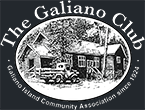LOCAL FLAVOUR: How choosing food plays into the climate change war

Photo: Chris Heffley
Linda Geggie is the executive director of the Capital Region Food and Agriculture Initiatives Roundtable. Below is an excerpt from an article she wrote for the Saanich News, published in October.
Young spokespeople like Greta Thunberg and other young leaders across the globe have inspired people to bring more visibility to the growing concerns being raised by climate science. Often overlooked in climate conversations is the role that our food plays. Growing and distributing food globally is estimated to contribute to over one third of human greenhouse gas (GHG) emissions. The United Nations International Panel on Climate Change (IPCC) points to agriculture as being responsible for 40 per cent of the Methane released into the atmosphere. This is important because as far as GHG’s go, Methane is a major bad ass gas, being 21 times more impactful than Co2 in its action to absorb energy in the atmosphere and cause temperature rise. We are learning the impacts of the global food system on our resources are vast.
The UN IPCC’s report published in August of this year digs deep into the science of what is happening and provides some important strategies that could be put in place immediately to work to turn things around. The report also determines that “People currently use one quarter to one third of land’s potential net primary production for food, feed, fiber, timber and energy.” That is all for us. It does not include meeting the needs of the other 8 million species on the planet.
As a citizen, the choices we make about what we eat are complex. Choices are associated with our income, culture, mobility, health, our food skills and other factors. Climate Connection in Manitoba provides some helpful guidelines they call the Rule of Five Ns. While it is not available to everyone, every time, it is a great guide for working towards a climate-friendly diet:
- Nearby – Buy food produced by farmers that live close by, to greatly reduce the pollution created from transporting food all around the world.
- Naked – Choose food that doesn’t have a lot of packaging.
- Nutritious – Buy food that is high in nutrients and low in preservatives and other chemical additions.
- New Now – Eat Canadian fruits and veggies at the time of year they grow, or grow your own in your garden.
- Natural – Choose organic, for food that is produced through holistic means, with no chemical inputs.
The Food Program supports local meat choices, in part because they provide an opportunity to reduce our reliance on industrial meat products, and the greenhouse gas emissions associated with their production and transport.
Under that umbrella, the Food Program partnered with the Galiano Conservancy Association, The Access to Media Education Society, the Community Resource Centre, and members of the Penelakut Island community to present the Feeding the People Butchering and Sausage Making workshop in December. Approximately 20 participants from Galiano and Mayne came together to learn how to skin, debone, cube, grind and bag venison. We worked together as a group: in Hul’qumi’num, nuts’a’maat – working together with one heart and one mind. Each participant took meat home for their freezer, and a very generous portion was also donated to the Food Program for distribution to families in need.
